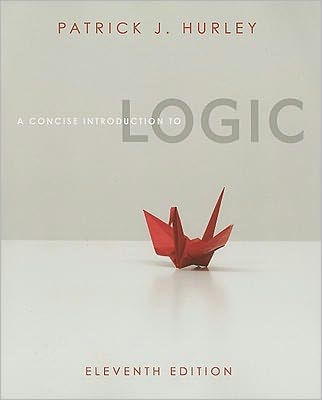5
1
9780840034168


A Concise Introduction to Logic / Edition 11 available in Paperback

A Concise Introduction to Logic / Edition 11
- ISBN-10:
- 0840034164
- ISBN-13:
- 9780840034168
- Pub. Date:
- 01/01/2011
- Publisher:
- Cengage Learning
- ISBN-10:
- 0840034164
- ISBN-13:
- 9780840034168
- Pub. Date:
- 01/01/2011
- Publisher:
- Cengage Learning

A Concise Introduction to Logic / Edition 11
$241.95
$241.95
This item is available online through Marketplace sellers.
$78.89
This item is available online through Marketplace sellers.
241.95
Out Of Stock

Product Details
| ISBN-13: | 9780840034168 |
|---|---|
| Publisher: | Cengage Learning |
| Publication date: | 01/01/2011 |
| Pages: | 736 |
| Product dimensions: | 7.30(w) x 9.10(h) x 0.90(d) |
About the Author
From the B&N Reads Blog

